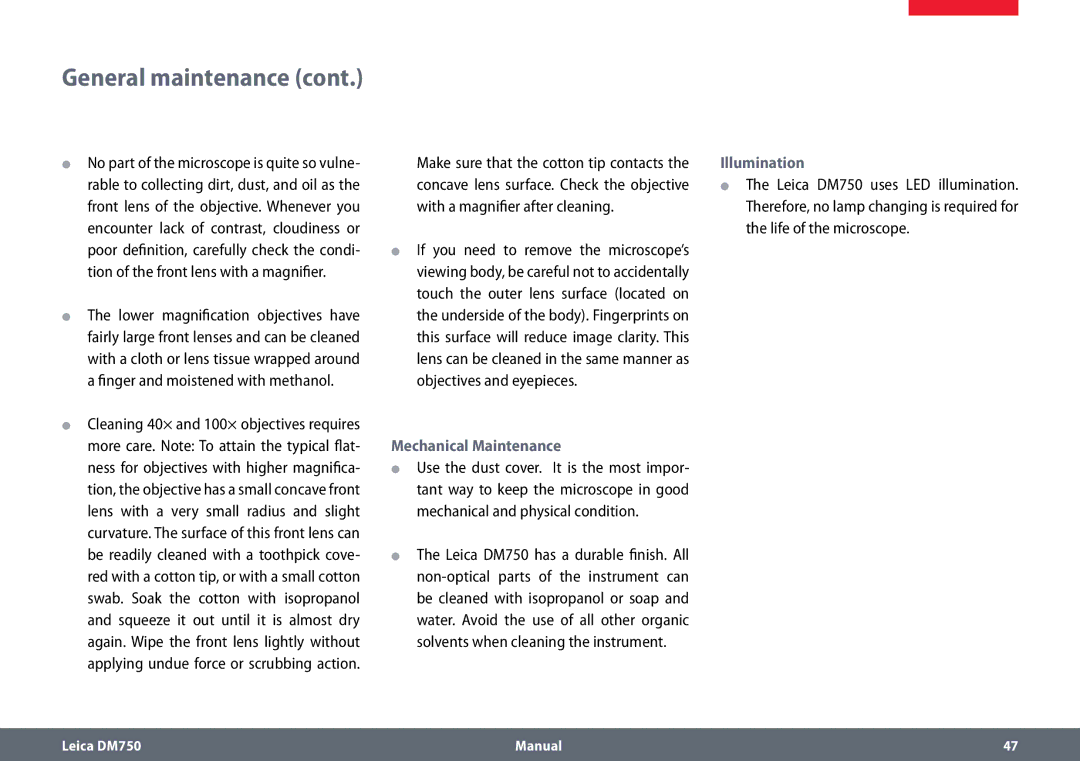General maintenance (cont.)
ϘϘ No part of the microscope is quite so vulne- rable to collecting dirt, dust, and oil as the front lens of the objective. Whenever you encounter lack of contrast, cloudiness or poor definition, carefully check the condi- tion of the front lens with a magnifier.
ϘϘ The lower magnification objectives have fairly large front lenses and can be cleaned with a cloth or lens tissue wrapped around a finger and moistened with methanol.
ϘϘ Cleaning 40× and 100× objectives requires more care. Note: To attain the typical flat- ness for objectives with higher magnifica- tion, the objective has a small concave front lens with a very small radius and slight curvature. The surface of this front lens can be readily cleaned with a toothpick cove- red with a cotton tip, or with a small cotton swab. Soak the cotton with isopropanol and squeeze it out until it is almost dry again. Wipe the front lens lightly without applying undue force or scrubbing action.
Make sure that the cotton tip contacts the concave lens surface. Check the objective with a magnifier after cleaning.
ϘϘ If you need to remove the microscope’s viewing body, be careful not to accidentally touch the outer lens surface (located on the underside of the body). Fingerprints on this surface will reduce image clarity. This lens can be cleaned in the same manner as objectives and eyepieces.
Mechanical Maintenance
ϘϘ Use the dust cover. It is the most impor- tant way to keep the microscope in good mechanical and physical condition.
ϘϘ The Leica DM750 has a durable finish. All
Illumination
ϘϘ The Leica DM750 uses LED illumination. Therefore, no lamp changing is required for the life of the microscope.
Leica DM750 | Manual | 47 |
|
|
|
